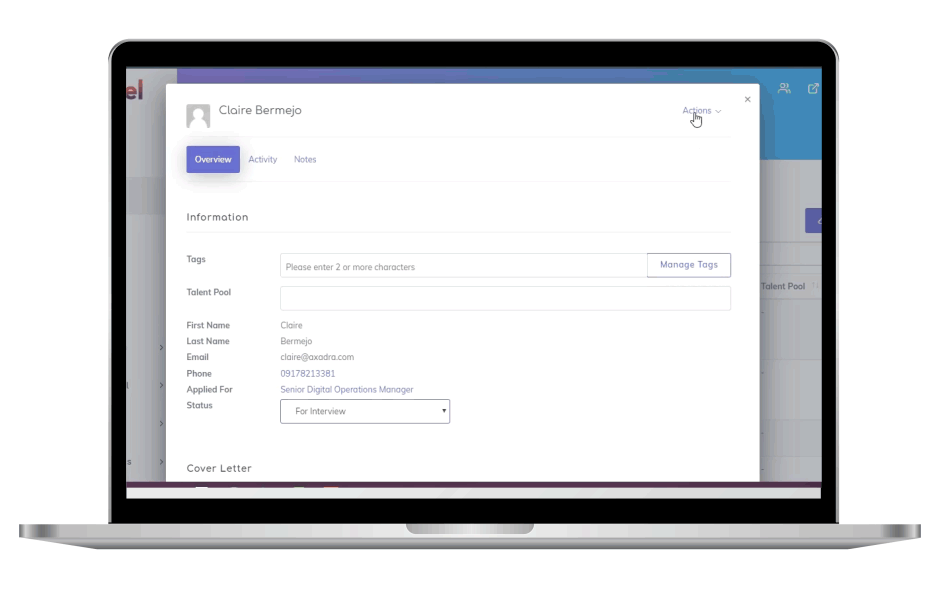The recruitment process is the best way to find the most qualified candidate who can fill the gap within your workplace. It allows you to gauge a person’s skills and qualifications to ensure that they can fulfill all the responsibilities that come with the position before offering them the job. This approach is often referred to as skills-based hiring.
However, recruitment and hiring don’t end with assessing an applicant’s hard skills. If you want to ensure harmony within the workplace and improve employee satisfaction, you should consider hiring for culture fit.
In this article, we’ll talk about what hiring for culture fit is and its pros and cons. You’ll also get to learn some tips on how to implement this approach for your organization.
What is Culture-Fit Hiring?
Culture-fit hiring is a recruitment approach that aims to determine how compatible a candidate is with the company’s culture. It allows recruitment professionals to gauge if the individual aligns with the organization’s mission and core values and can embody them in their daily lives. The strategies used in this hiring method are designed to assess if the applicant has the soft and hard skills necessary for them to fit in with the existing employees.
The main difference between culture-fit and skills-based hiring is that the latter focuses on assessing a candidate’s hard skills and whether they have the qualifications to fill the open position. Culture-fit hiring, on the other hand, goes a step further by taking a look at the applicant’s values to assess if they can thrive within the workplace and align with the company’s culture.
The Pros of Culture-Fit Hiring
Although skills-based hiring is considered the traditional approach to recruitment, there is still some room for improvement. This is where hiring for culture fit comes in. This method can provide you with a new perspective when assessing applicants and allow you to enjoy the following benefits:
Improved Job Satisfaction
Hiring for company culture fit can help you ensure that your employees keep walking into work with a spring in their step, excited for the day ahead. This is possible because this recruitment method allows you to create a work environment where everyone feels understood, appreciated, and aligned with the organization’s mission and core values. When your employees resonate with the company culture, they’re more likely to derive meaning from their work, leading to increased job satisfaction.
Better Employee Engagement
Employee engagement doesn’t simply mean having your team members show up daily. It’s more about ensuring that they’re mentally present, emotionally invested, and eagerly contributing to their work.
When you hire for culture fit, you are ensuring that everyone in your workforce has the same level of passion and commitment to their job. This leads to your employees being engaged with their work and even willing to cooperate in making the workplace a better space for everyone.
Higher Employee Retention Rate
When employees are satisfied and engaged with their jobs, they are less likely to leave and find opportunities elsewhere. They also probably consider themselves an integral part of the organization and are willing to give extra effort to preserve their tight-knit community.
By implementing culture-fit hiring in your company, you can increase your chances of recruiting individuals who will stick around for a long time. This, in turn, improves your employee retention rate and allows you to foster a stable and cohesive team.
Enhanced Productivity
Hiring for culture fit helps you create a workspace that values collaboration, communication, and shared goals and where productivity freely flourishes. When your employees align with your company culture, they will ultimately feel supported and understood, encouraging them to unleash their creativity, innovate, and collaborate effectively.
The Cons of Culture-Fit Hiring
Culture-fit hiring has become a common approach among recruitment professionals over the years. However, this doesn’t mean that it’s a flawless approach. This hiring method can still have some pitfalls, including the following:
Unskilled Employees
While culture fit is important, prioritizing it exclusively may cause you to overlook candidates who possess valuable skills and qualifications. Focusing solely on applicants’ cultural fit with your organization may result in hiring individuals who lack the necessary expertise or experience to excel in their roles, ultimately hindering team performance and organizational growth.
Lack of Diversity
Relying heavily on cultural fit can also lead to a lack of diversity within the workforce. This means that you are more likely to hire individuals with similar backgrounds, perspectives, and experiences, which can lead to less innovation and creativity in the workplace. Ultimately, your organization will suffer, specifically your ability to adapt to change and address complex challenges.
Unconscious Hiring Bias
Hiring to fit your company culture can inadvertently perpetuate unconscious biases in the recruitment process. Hiring managers may gravitate towards candidates who share similar backgrounds or interests, leading to a lack of diversity and inclusion. Additionally, using subjective criteria to assess cultural fit may inadvertently discriminate against individuals from underrepresented or marginalized groups, further perpetuating inequalities in the workforce.
Tips on Hiring for Culture Fit
If you’re considering culture-fit hiring for your organization, here are some tips to help you avoid unconscious hiring bias and other problems:
- Define and Share Your Company Culture: Before you start your recruitment process, take the time to define your company’s culture. Then, share this information through your website, job postings, and social media platforms to attract candidates who resonate with your values and mission.
- Prepare Culture-Fit Interview Questions: Design culture-fit interview questions that probe beyond technical skills to assess candidates’ alignment with your company culture. Ask about teamwork experiences, problem-solving approaches, and preferred work environments to gauge cultural fit.
- Utilize an Applicant Tracking System: Implement an applicant tracking system to streamline the hiring process and ensure consistency in evaluating candidates based on cultural fit criteria. This technology can help you organize candidates’ data, track their progress, and identify top contenders who align with your company’s values.
- Train Your Recruitment Officers: Provide training to your recruitment team on identifying and assessing cultural fit during the hiring process. Equip them with the tools and techniques necessary to evaluate candidates holistically, considering both technical skills and cultural alignment.
Create a Better Workplace for Your Employees
Start hiring for culture fit and witness your workplace blossoming into a more conducive space where your employees can maximize their potential and work together to bring your business closer to success. By finding the balance between culture-fit and skills-based hiring and following the tips listed above, you can build a passionate team that is committed to contributing to your organization.













